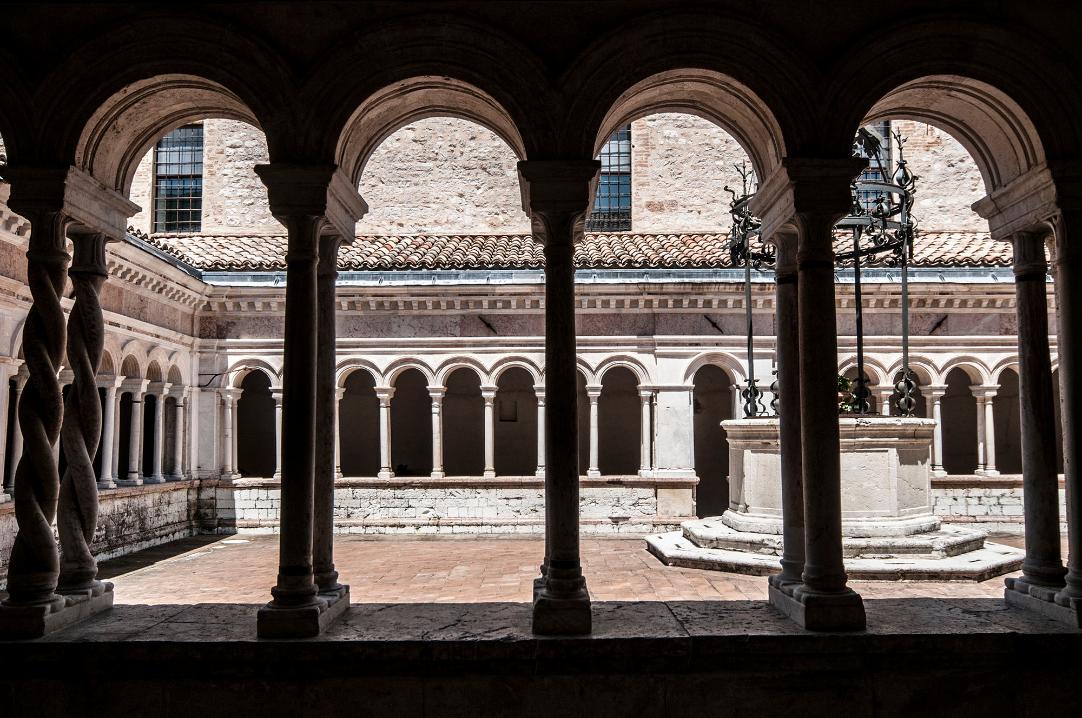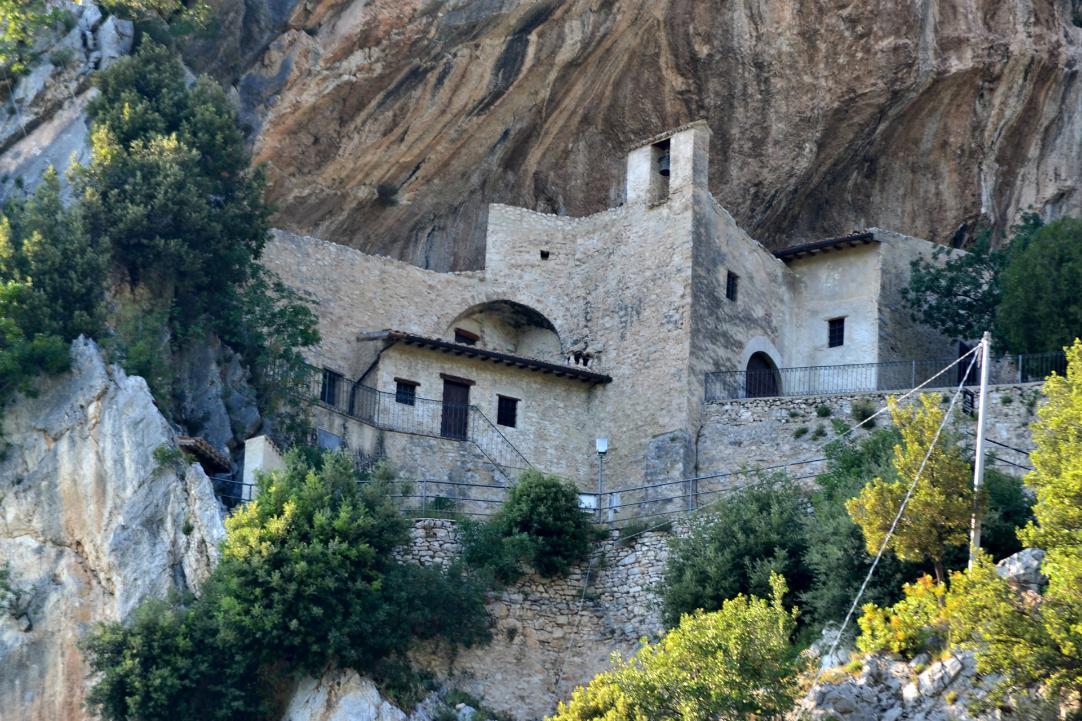| Distance | 4 km |
| Difference in level | 320m |
| Difficulty | Easy |
| Walking time | 2 hour |
| Road surface | asphalt and dirt road |
| To visit in the area | Abbey of Santa Croce di Sassovivo, Blessed Alano’s crypt, Abbadessa Caves, Pale Castle, Hermitage of Santa Maria Giacobbe, Menotre Waterfalls, Pale cliff |
In 2018, the 4-kilometre-long historical path that once connected the Abbey of Sassovivo to the village of Pale was reopened: a path that leads to the discovery of the natural beauty of one of the most beautiful mountains overlooking the city of Foligno.
The route begins at the Abbey of Santa Croce di Sassovivo, founded in the last quarter of the 11th century along the ancient Via Lauretana, an important pilgrimage route that connected Rome to the Sanctuary of the Holy House of Loreto. The abbey, extended over the centuries, was originally a castle, and stands in an area rich in holm oak forests a few minutes east of Foligno. The “Macchia Sacra” (sacred forest) of the holm oak woodland of Sassovivo is one of the most interesting landscape elements in the area around the abbey, present for most of the itinerary.
The walk continues along the asphalt road leading to Casale, and after about 300 metres we come to the Romanesque crypt known as “of Blessed Alano” on the right, founded in the 11th century and later dedicated to the Viennese monk who lived there in the early 14th century. Originally conceived by the hermit Mainardo and his followers as the original nucleus for the construction of a monasterium, it was never completed due to the frequent landslides affecting the area: the congregation therefore decided to move to the nearby castle, a donation from the Lombard Monaldi family. Of the original structure, currently unfit for use, part of the façade, the portico and the crypt are preserved.
This is the starting point for the short (about 500 metres outward and return) and evocative path known as the “Abbot's Walk”, which begins near an ancient fountain and crosses a scrub of centuries-old holm oaks, offering a sort of “arboreal cathedral”. In this place, the abbot of Sassovivo and his brethren sought peace and silence to gather in prayer over a thousand years ago.
Returning to the main road, we come to a crossroads from where the historic path that connects Sassovivo to Pale begins, while on the left at a wide bend the dirt road of the “Passo delle Capre” (Goats’s pass) opens up. Ignoring various detours, we continue along the dirt road, keeping to the direction of the ditch on the left, until we enter a holm-oak wood that ends in a pass.
From this slope, the landscape changes considerably and one enters an environment with woods of black hornbeam-leaved and manna ash, in which one can also find downy oaks, Bosnian maples, Montpellier maples and specimens of golden chain.
From here, take a mule track with a pebbly bottom, slightly downhill, that after about 100 metres turns left, increasing the gradient until it reaches the SS 77. After cautiously crossing the state road, follow the main road that leads to Pale, a small town that has felt the influence of the nearby Sassovivo Abbey and the trade of the Via Lauretana since its birth, where numerous paper mills were established in the past.
From here, starting from Piazza Elisei, it is possible to explore three geological and cultural educational trails that lead to important sites in the area, such as the Abbadessa Caves, Pale Castle with its walls, and the Hermitage of Santa Maria Giacobbe. Nearby, following the signs, you can also admire the Menotre Waterfalls, while climbing enthusiasts can reach the Pale cliff, with over 150 equipped routes suitable for climbers of all levels, built on the rock walls overlooking the Topino river valley.





























